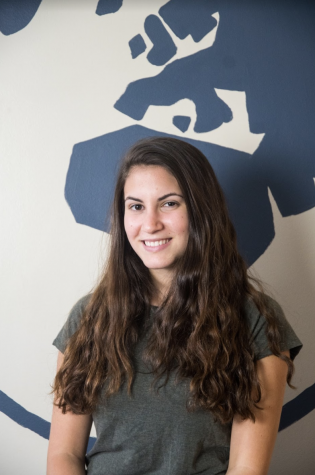This past November, I participated in a school swap through Cultural Leadership, which is a program that educates about social justice through the African-American and Jewish experience.
I spent a day at Vashon High School, which is a predominantly African American St. Louis public school.
Going into this school swap, I knew that education inequity was a problem in St. Louis, but I didn’t know the extent of the education gap was until I entered VHS and experienced the average school day of a VHS student.
As I entered VHS at 8:00 a.m., I was greeted by metal detectors, which every student is required to go through when they enter the school.
Next, I was introduced to my guide, a junior at VHS who I would shadow the whole day. As I followed her down the halls, all eyes were on me because I was the only white kid in the school.
“Are you visiting?” A teacher asked me. “Yes,” I told her. “Good luck…” she said to me as she glanced around the classroom.
While walking around the school with my guide, she gave me a few tips and facts for the day: don’t walk into the school bathroom, and don’t go into the daycare, which is for the students’ children.
My guide, who was biracial, explained how she didn’t really fit in with the students at VHS. She transferred to VHS last year from Hazelwood, when she moved with her grandma. When describing VHS, she said, “People in St. Louis label Vashon as the dumb school, so we uphold to that. We don’t work, this is not a smart school. The sophomores are reading a fifth grade level,” she said.
When I asked about the workload, she said that she hasn’t taken a real test the whole year she has attended VHS, and she hasn’t written any essays for her classes. She explained that since she’s mixed, she has the ability to choose whether she wants to be more white or more black.
At her old school she was white, but at VHS she is black. “I miss being white,” she said. “I’m done being black.”
In all the classes I attended, the teachers stopped teaching twenty minutes into class because the students refused to learn. As students left, went on their phones and fought, each teacher stopped teaching as a result of frustration and lack of hope.
“Here the work is too easy,” my guide said. “You fly right through it. They give us middle school work.”
Finding teachers to work at VHS is also a challenge. With a much lower salary than other public school teachers are offered, teachers must be committed to being culturally responsive, as well as supportive and caring towards the large population of students who lack a traditional family structure at home.
“Currently we have about a 33 percent homeless population, and 80 percent of freshman are reading below grade level. Attracting staff that is committed to working with this population is a struggle,” Brenda Smith, freshman-class principal said.
The immense difference in resources, learning levels, and student population between VHS and CHS can be traced to racially based housing policy that dates back to the twentieth century.
While property segregation was originally enforced to segregate African Americans that had moved to the St. Louis area, segregation in neighborhoods is still present today. Since families tend to send their children to schools in their neighborhoods, the kids from high-income families afford schools with good resources, and the kids from low income families attend schools that lack these resources.
While schools like CHS spend $19,681 per student, which is above the natural average, schools like VHS, which are located in predominantly black areas spend far less than the national average on each student.
Measures must be taken to end the segregation between schools in St. Louis.
Whether they be more programs like the desegregation busing program, or a housing-based program put forth, racially based schools like VHS will continue to fall behind county schools like CHS, which continues to progress.

